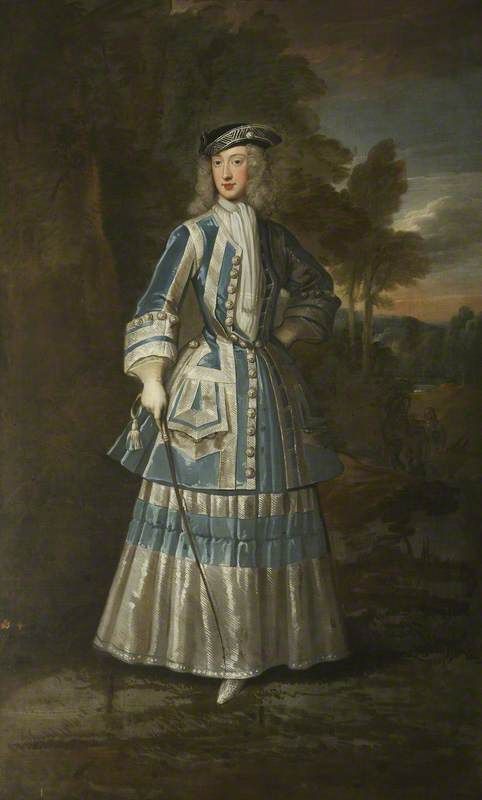Countess of Oxford and Mortimer Henrietta Cavendish Harley (1694–1755)
Dictionary of National Biography (1885–1900)
HARLEY, EDWARD, second Earl of Oxford (1689–1741) ... married on 31 Oct. 1713 Lady Henrietta Cavendish Holies, only daughter and heiress of John, fourth earl of Clare, created duke of Newcastle, by Lady Margaret Cavendish, third daughter and co-heiress of Henry, second duke of Newcastle. Of 500,000l. which his wife brought him, 400,000l. is said to have been sacrificed to 'indolence, good-nature, and want of worldly wisdom.' A dull, worthy woman, the countess disliked most of the wits who surrounded her husband, and she 'hated' Pope. She was, however, a favourite with Lady Mary Wortley Montagu (cf. the latter's Letters, ed. Wharncliffe and Thomas, i. 94, ii. 92, 93, 128). Her correspondence with Lady Sundon, extending from 1731 to 1735, is in Addit. MS. 20104, ff. 90–8. She passed her widowhood at Welbeck, where she spent 40,000l. in improvements, and occupied herself in arranging the ancestral portraits and attaching inscriptions to them, and in gathering together all the other memorials she could discover of the various 'great families which centred in herself' (Walpole, Letters, ed. Cunningham, iii. 32). She employed Vertue, the proofs of whose works the earl had zealousy collected, to catalogue all the pictures and portraits left to her by her husband (Notes and Queries, 3rd ser. iv.286), but she retained few of the earl's treasures. The miscellaneous curiosities, with the coins, medals, and portraits, were sold by auction in March 1742, and the books, including about 50,000 printed books, 41,000 prints, and 350,000 pamphlets, were bought the same year by Thomas Osborne, the bookseller of Gray's Inn, for 13,000l., which was several thousand pounds less than the cost of binding. Osborne found his purchase a heavy investment. The sale catalogue of the coins was compiled by George North, F.S.A. ; that of the library partly by William Oldys, in five volumes 8vo, London, 1743-5, while Johnson contributed an introduction ('Catalogus Bibliothecæ Harleianæ in locos communes distributus cum Indice Auctorum'). Under the title of the 'Harleian Miscellany' a selection of scarce pamphlets and tracts found in the library was made by Oldys and printed in eight volumes 8vo, London, 1744-6, with a preface by Johnson. The best edition is that by Thomas Park, in ten volumes 4to, London, 1808-13. A 'Collection of Voyages and Travels,' compiled from the same source, appeared in two volumes fol., London, 1745.
That the manuscripts might not be dispersed, Lady Oxford parted with them in 1753 to the nation for the insignificant sum of 10,000l. (26 Geo. II, c. 22, sec. 3). They now form the Harleian collection in the British Museum, and consist of 7,639 volumes, besides 14,236 original rolls, charters, deeds, and other legal documents. A catalogue of the contents of the manuscript volumes (exclusive of the charters, &c.) was published in two volumes fol., London, 1759-63, the compilation of H. Wanley, D. Casley, and W. Hocker; another, the work of R. Nares, Sir H. Ellis, and T. H. Horne, in four volumes fol., London, 1808-12. A manuscript catalogue of the charters, in the handwriting of Samuel Ayscough [q. v.], is now in use at the British Museum. A new index is in preparation.
Lady Oxford died on 9 Dec. 1755, aged 62, and was buried with her husband on the 26th. Their only surviving child, Margaret Cavendish (1715–1785), who married, on 11 June 1734, William Bentinck, second duke of Portland, was the 'noble, lovely little Peggy,' celebrated by Prior. Harley's portrait by Mahl was engraved by Vertue. In 1731 Thomas Gent [q.v.] addressed to him epistles in prose and verse respecting a proposed supplement to Walton's Polyglott Bible.
G. G.
